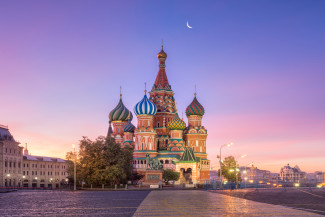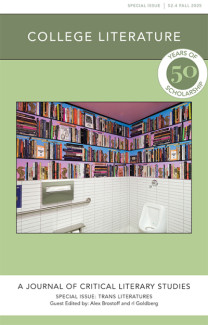
Johns Hopkins UniversityEst. 1876
America’s First Research University
In Search of Russian Modernism

The disintegration of the Soviet empire brought about a Copernican revolution in Russian cultural historiography. Paradoxically, the post-Soviet documentary deluge and the collapse of the ideological coordinates hitherto guiding the writing of cultural history have left Russian modernist studies fundamentally unchanged. My book, In Search of Russian Modernism, interrogates the field’s methodological assumptions, removing the aura of certainty surrounding the analytical tools at our disposal and suggesting alternatives to the conventional ways of thinking about Russian and transnational modernism. I have found validation for my epistemological doubt, as well as fruitful analytical approaches, in Anglo-American “new modernist studies” which are driven by the same frustration with the established canon, chronology, geography, taxonomy, and sociology of modernism that informs my inquiry.
My book advocates for a methodological shift in the ways we think and write about Russian and transnational modernism. I explore the idea of modernism as a minority culture that coexists and interacts with other cultural formations in a given historical time and geographic space. Looking beyond artistic and philosophical expression, in order to account for modernism’s socioeconomic and institutional life, and broadening the academic field’s purview to include not only cultural producers but also mediators and consumers, I argue that national and transnational modernisms function as continuously evolving interpretive communities whose members bestow a range of shared meanings on human experience. The specificity of the Russian case in transnational modernist context consists in the extreme demographic and geographic fluctuation of Russia’s modernist community thanks to the country’s turbulent twentieth-century history.
One benefit of reshaping modernist studies as an inquiry into a culture resides in our newfound ability to complement the writing of modernist history as a succession of canonical works and authors with the exploration of modernism in space and time as a story of a cultural community’s gestation, evolution, and decline. Another benefit of such conceptual reframing is the enhanced ability of researchers to take critical distance from their object of investigation. As the book demonstrates, the common terminology of modernist studies, rooted in the partisan agendas and factional debates of modernism’s exponents and foes, can become a structuring principle of academic inquiry, forcing scholars to adopt the biased logic of their material. I also show that the same logic obtains in the classification criteria we use to distinguish modernist authors and artifacts from non-modernist ones. Our taxonomy relies on the extant definitions of modernism, mired in the partisan agendas of their creators and drawing our attention to some authors and practices at the expense of others.

The theoretical model of Russian modernism emerging in the book—and which, I hope, can serve as a conceptual tool aiding the study of other national modernist traditions—is that of a cultural space with a core and a periphery, periodically overlapping with rival cultural formations thanks to shared ideas, myths, values, practices, and participants. This space evolves in response to new cohorts of cultural producers and consumers, who renew modernism’s dominant values, ideas, and practices, modifying the relative distribution of its actors.
Probably the most consequential methodological advantage of thinking modernism as a cultural community consists in the variety of analytical vantages opened by the notion of culture itself. This variety of perspectives permits the writing of modernist history as a series of complementary, and even contradictory, stories. Brought together, into a historical atlas of sorts, all such stories would offer a much richer than hitherto possible description of a national or transnational modernist culture. Naturally, my advocacy of modernist studies as an atlas-like project in cultural cartography—highlighting different aspects of a geographically circumscribed cultural space over a period of historical time—implies a long-term, group scholarly effort. The book’s limited scope is an invitation to researchers in Russian and transnational modernism to contribute other stories/maps to the same historical atlas.
I believe the conceptual approach elaborated in this monograph facilitates transnational approaches in modernist studies. And I sincerely hope that a number of such comparative investigations appear as a result of the debate this book strives to provoke by challenging the accepted ideas and stock practices in Russian and transnational modernist studies. Instead of a fixed theoretical framework, I am proposing a common conceptual denominator for the multiplicity of vantage points I urge my colleagues to adopt. This common denominator—the vision of modernism, national or transnational, as a cultural community existing in a given geographic space and historical time—transforms the field of modernist studies into a project in cultural cartography, with Russian modernism among its least explored terrains whose embarrassment of riches never fails to reward investigators with a deeper understanding of transnational modernist experience. Hence the title of this book. Hence also my hope that the ensuing scholarly debate will enable us to follow the numerous poorly explored paths in the investigation of Russian and transnational modernist cultures.
Leonid Livak is a professor in the University of Toronto’s Department of Slavic Languages and Literatures and the Anne Tannenbaum Centre for Jewish Studies. He is the author of In Search of Russian Modernism, How It Was Done in Paris: Russian Émigré Literature and French Modernism, The Jewish Persona in the European Imagination: A Case of Russian Literature, and Russian Émigrés in the Intellectual and Literary Life of Interwar France: A Bibliographical Essay.


